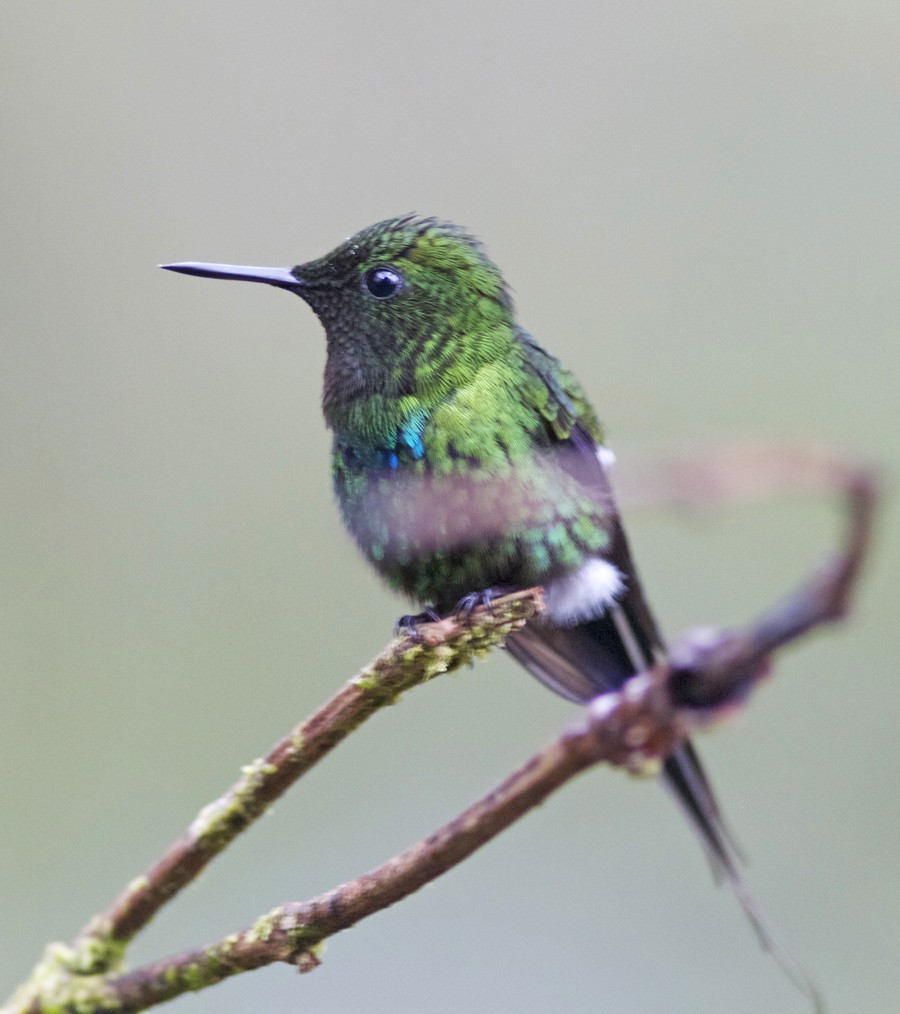Green Thorntail
A species of Thorntails Scientific name : Discosura conversii Genus : Thorntails
Green Thorntail, A species of Thorntails
Botanical name: Discosura conversii
Genus: Thorntails
Content
Description General Info
 Photo By Joseph C Boone , used under CC-BY-SA-3.0 /Cropped and compressed from original
Photo By Joseph C Boone , used under CC-BY-SA-3.0 /Cropped and compressed from original Description
The green thorntail (Discosura conversii) is a small hummingbird that is a resident breeder from Costa Rica to western Ecuador. It occurs at middle elevations from 700–1,400 m (2,300–4,600 ft) but may descend lower early in the wet season. In Costa Rica and Panama it is confined to the Caribbean slopes. This is a forest canopy species. The nest is undescribed, but a published image shows a female constructing a nest on a thin branch, so it is presumably similar to other cup nests built by species such as the green-breasted mango. All hummingbirds lay two white eggs incubated by the female alone. Green thorntail has mainly green upperparts, a white rump band and a blackish lower rump and tail. It weighs just 3 g (0.11 oz). The 10 cm (3.9 in) long male has the long wire-like tail that gives this species its name and green underparts. The 7.5 cm (3.0 in) long female lacks the long tail and has blackish underparts with a green breast band. She has conspicuous white moustaches. The green thorntail is usually silent, but may give a quiet chip. These birds visit small flowers including those of epiphytes and shrubs, and also take tiny flies and wasps. Breeding males perch on open branches and may give a dive display. 
Size
10 cm
Nest Placement
Tree
Feeding Habits
Green Thorntail feeds primarily on nectar from flowering trees and shrubs, especially preferring brushlike inflorescences of legumes. Green Thorntail also consumes small arthropods, including flies, wasps, and spiders, showcasing opportunistic foraging behavior.
Habitat
Green Thorntail typically inhabits the upper layers of humid montane and lowland evergreen forests. Preferring elevated regions, they are frequently found at the forest canopy level and along forest edges. These birds are also known to frequent clearings where flowering trees provide essential nectar resources. Their habitat extends across broad tropical geographical regions, encompassing a range of forested environments that offer the necessary conditions for their survival.
Dite type
Nectivorous
General Info
Feeding Habits
Bird food type
Species Status
Not globally threatened.
Scientific Classification
Phylum
Chordates Class
Birds Order
Swifts and hummingbirds Family
Hummingbirds Genus
Thorntails Species
Green Thorntail